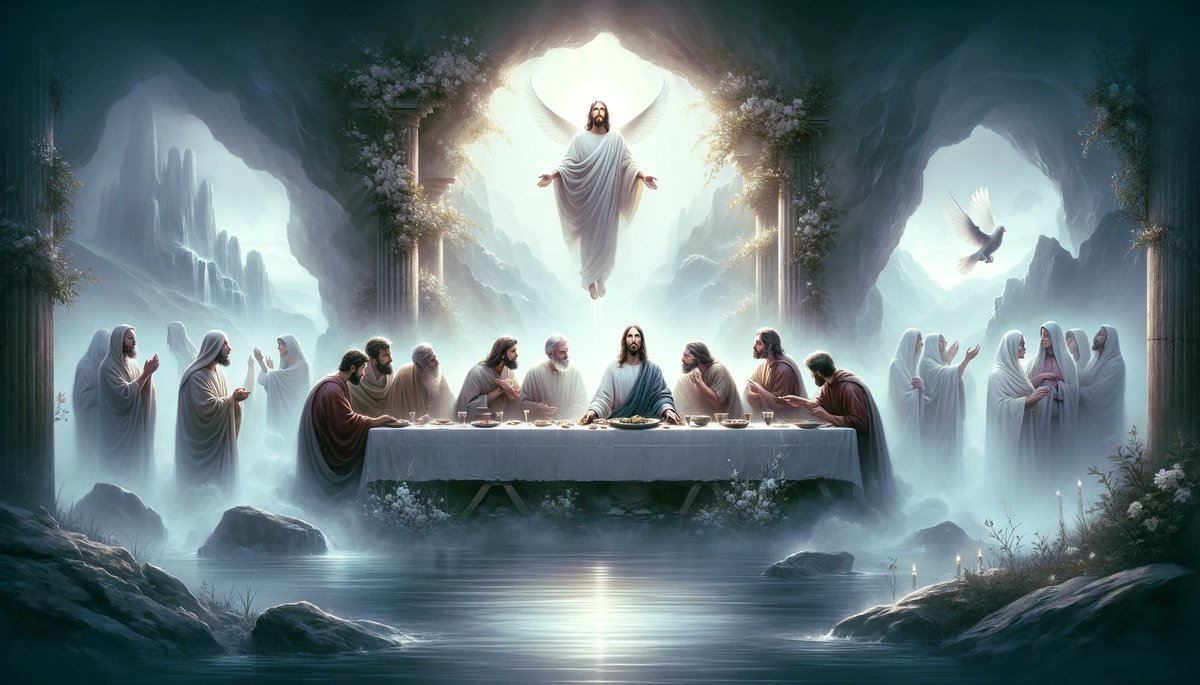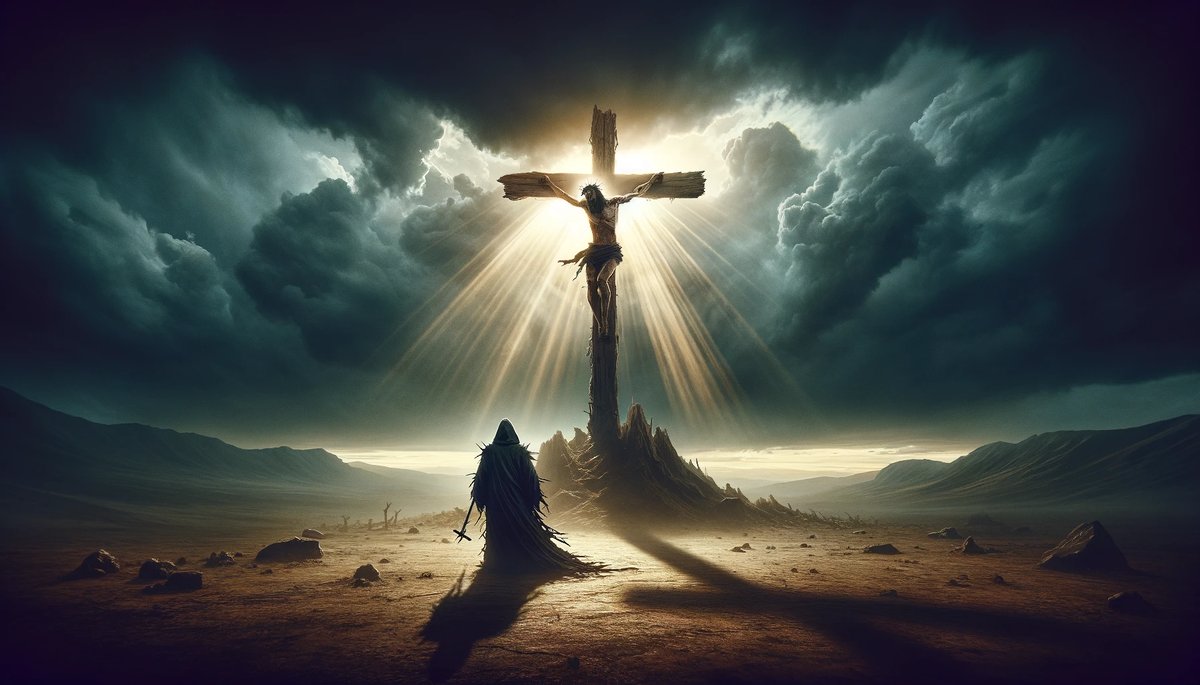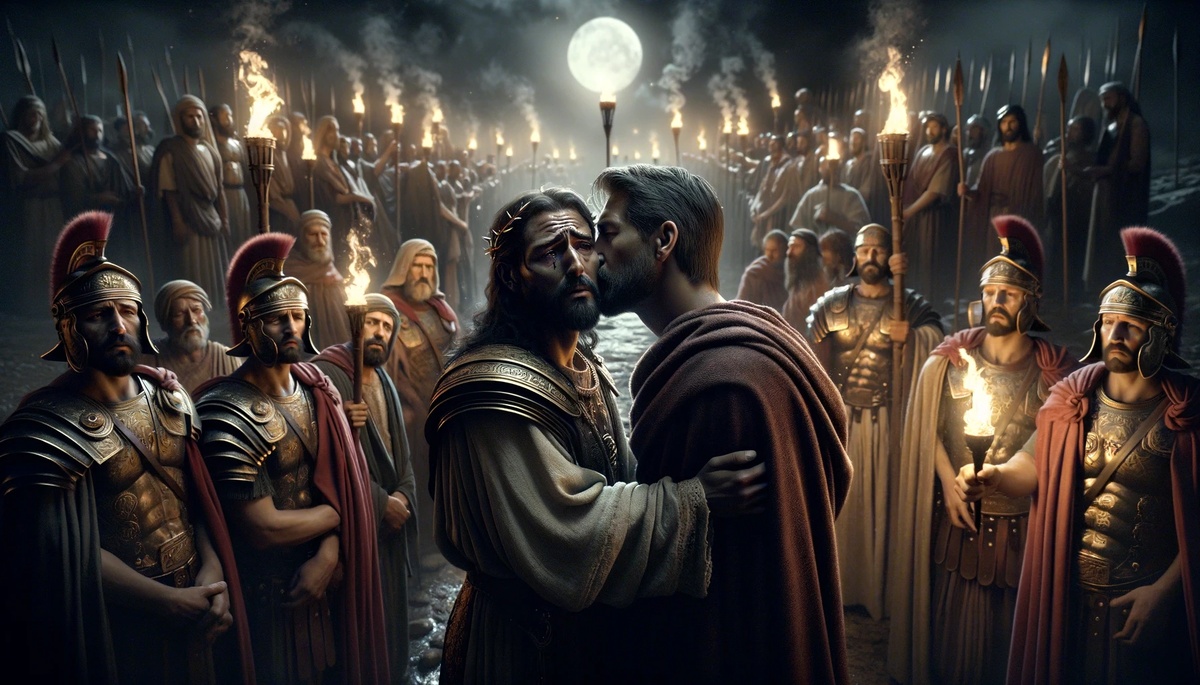Home>Christian Videos>Bible Stories>How Did Jesus Christ Die?


Bible Stories
How Did Jesus Christ Die?
Published: March 2, 2024
Ericka Andersen, an editor at Christian.net, expertly merges digital strategy with content creation, focusing on faith and societal issues. Her communication skills enhance the platform's engaging narratives, fostering meaningful dialogue on belief's impact on society.
Discover the biblical account of Jesus Christ's death and the events leading up to it. Explore the significance of this pivotal moment in Bible stories.
(Many of the links in this article redirect to a specific reviewed product. Your purchase of these products through affiliate links helps to generate commission for Christian.net, at no extra cost. Learn more)
Table of Contents
The Crucifixion of Jesus Christ
The crucifixion of Jesus Christ is a pivotal event in Christian theology and history. It is the central focus of the Christian faith and is considered to be the ultimate sacrifice for the redemption of humanity's sins. The crucifixion is a significant event not only in terms of its religious implications but also in its historical and cultural impact.
The crucifixion of Jesus Christ is a fundamental tenet of Christianity, symbolizing the ultimate act of love and sacrifice. It is believed that Jesus willingly endured the agony of crucifixion to atone for the sins of humanity and to offer the promise of eternal life. The crucifixion is a cornerstone of Christian belief, representing the core of the Christian faith and serving as a symbol of hope, redemption, and salvation.
The crucifixion of Jesus Christ is a profound and deeply meaningful event in Christian theology. It is a demonstration of the immense love and compassion that Jesus had for humanity, as well as a testament to his unwavering commitment to fulfilling the divine purpose of salvation. The crucifixion serves as a powerful reminder of the profound impact of Jesus' life and teachings, and it continues to be a source of inspiration and spiritual reflection for millions of Christians around the world.
Read more: Where Did Jesus Christ Die
The Events Leading to Jesus' Death
-
Betrayal by Judas Iscariot: The events leading to Jesus' death began with the betrayal by one of his disciples, Judas Iscariot. Judas, one of the twelve apostles, agreed to hand Jesus over to the religious authorities in exchange for thirty pieces of silver. This act of betrayal set in motion the sequence of events that ultimately led to Jesus' crucifixion.
-
The Last Supper: The Last Supper, a significant event in Christian tradition, marked the final meal Jesus shared with his disciples before his arrest and crucifixion. During this meal, Jesus instituted the sacrament of the Eucharist, symbolizing the impending sacrifice of his body and blood. He also foretold his betrayal and identified Judas as the one who would betray him.
-
Agony in the Garden of Gethsemane: Following the Last Supper, Jesus went to the Garden of Gethsemane to pray. It was here that he experienced deep anguish and sorrow, knowing the suffering that awaited him. Jesus prayed to God, expressing his willingness to fulfill the divine plan, even though he knew the immense physical and emotional pain that awaited him.
-
Arrest and Trials: After the betrayal by Judas, Jesus was arrested by the religious authorities and brought before the Jewish high priest and the Roman governor, Pontius Pilate, for trials. Despite being innocent of any wrongdoing, Jesus was subjected to false accusations and condemnation. The trials culminated in the decision to crucify Jesus, in response to the demands of the crowd and the religious leaders.
-
The Crucifixion: The events leading to Jesus' death reached their climax with the crucifixion. Jesus was scourged, mocked, and forced to carry his cross to the place of execution. He was then nailed to the cross, where he endured excruciating physical suffering and ultimately gave up his life. The crucifixion of Jesus is a central event in Christian belief, representing the sacrificial offering of his life for the redemption of humanity.
The events leading to Jesus' death are integral to the Christian narrative, embodying themes of betrayal, sacrifice, and the fulfillment of divine purpose. These events serve as a profound reminder of the depth of Jesus' love and the significance of his ultimate sacrifice in Christian theology.
The Physical Suffering of Jesus on the Cross
The physical suffering endured by Jesus on the cross is a central aspect of the crucifixion narrative. According to the Gospels, Jesus was subjected to a series of agonizing torments leading up to and during his crucifixion. These tortures were not only excruciatingly painful but also carried deep symbolic significance in Christian theology.
Scourging
Before being crucified, Jesus was subjected to a brutal scourging, a form of punishment involving the use of a whip or lash with embedded metal or bone fragments. The scourging was intended to inflict severe pain and weaken the victim. The Roman soldiers, carrying out the scourging, showed no mercy as they lacerated Jesus' flesh, causing intense bleeding and trauma to his body.
Crown of Thorns
In a cruel mockery of Jesus' claim to be the "King of the Jews," the Roman soldiers fashioned a crown of thorns and forcefully pressed it onto his head. The sharp thorns pierced his scalp, causing profuse bleeding and excruciating agony. This act of humiliation and torment was intended to degrade Jesus and mock his purported kingship.
Read more: How Did The 12 Disciples Of Jesus Christ Die
Carrying the Cross
Following the scourging, Jesus was compelled to carry the heavy wooden crossbeam to the site of his crucifixion. This arduous task was made even more grueling by the physical trauma he had already endured. The weight of the cross, combined with his weakened state, would have intensified his suffering and exhaustion.
Crucifixion
The act of crucifixion itself was a form of execution designed to prolong the agony of the victim. Jesus was nailed to the cross, with spikes driven through his hands and feet. The intense pain of the crucifixion was compounded by the physical strain of supporting his body weight, as well as the difficulty in breathing. The position of the body on the cross made it increasingly challenging to inhale, leading to asphyxiation and further anguish.
Piercing of the Side
To ensure Jesus' death, a Roman soldier pierced his side with a spear, causing a flow of blood and water. This act not only confirmed Jesus' demise but also symbolized the shedding of his blood and the purification of humanity's sins, according to Christian interpretation.
The physical suffering of Jesus on the cross represents the depth of his sacrifice and the extent of his love for humanity. It serves as a profound symbol of redemption and atonement in Christian belief, demonstrating the willingness of Jesus to endure unimaginable torment for the salvation of humanity.
The Death of Jesus According to the Gospels
The death of Jesus, as depicted in the Gospels of the New Testament, is a profound and pivotal event in Christian belief. The Gospels of Matthew, Mark, Luke, and John provide detailed accounts of the circumstances surrounding Jesus' crucifixion and the events leading up to his death. These narratives offer a comprehensive portrayal of the profound significance of Jesus' sacrifice and the theological implications of his death.
Read more: Why Did Jesus Christ Die
The Agony on the Cross
The Gospels describe the excruciating physical and emotional suffering that Jesus endured during his crucifixion. They depict Jesus hanging on the cross, bearing the weight of humanity's sins and experiencing profound anguish. The Gospels emphasize Jesus' expressions of forgiveness and compassion even in the midst of his agony, underscoring his unwavering commitment to his divine mission.
The Darkness and Earthquake
According to the Gospels, darkness descended over the land during the crucifixion, symbolizing the cosmic significance of Jesus' sacrifice. This supernatural darkness is described as occurring in the middle of the day, signifying the profound impact of Jesus' death on the natural order. Additionally, the Gospels record an earthquake that occurred at the moment of Jesus' death, underscoring the seismic significance of this event in Christian theology.
The Last Words of Jesus
The Gospels document the last words spoken by Jesus as he hung on the cross. These final utterances, including "Father, forgive them, for they know not what they do" and "It is finished," convey the depth of Jesus' compassion, forgiveness, and fulfillment of his redemptive mission. The Gospels present these last words as a testament to Jesus' divine nature and his ultimate sacrifice for the salvation of humanity.
The Piercing of Jesus' Side
The Gospels recount the piercing of Jesus' side by a Roman soldier, an act that confirmed his death. This event is significant in Christian theology, as it is interpreted as fulfilling Old Testament prophecies and symbolizing the atoning sacrifice of Jesus. The flow of blood and water from Jesus' side is seen as emblematic of the cleansing and redemption of humanity through his death.
Read more: In What Year Did Jesus Christ Die
The Burial of Jesus
The Gospels detail the burial of Jesus in a tomb, marking the culmination of his earthly life. The accounts of his burial underscore the reality of his death and the fulfillment of scriptural prophecies. The Gospels depict the laying of Jesus' body in the tomb as a prelude to the subsequent events of his resurrection, which form an integral part of Christian belief and the Easter narrative.
The death of Jesus, as depicted in the Gospels, is a central and profound aspect of Christian theology. The narratives of Jesus' crucifixion and its theological implications serve as a cornerstone of Christian faith, symbolizing the redemptive sacrifice and atoning love of Jesus Christ.
The Significance of Jesus' Death in Christianity
-
Atonement for Sin: The death of Jesus is central to the concept of atonement in Christianity. According to Christian belief, Jesus' sacrificial death on the cross serves as the ultimate atonement for the sins of humanity. His willingness to bear the burden of human transgressions and offer himself as a perfect sacrifice is seen as the means through which individuals can be reconciled with God and find forgiveness for their sins.
-
Redemption and Salvation: The death of Jesus is viewed as the means through which humanity is redeemed and offered the gift of salvation. In Christian theology, Jesus' death is seen as the pivotal moment in God's plan for the redemption of humanity. Through his death and subsequent resurrection, Jesus is believed to have conquered sin and death, offering the promise of eternal life to those who accept him as their savior.
-
Victory Over Evil: The death of Jesus is interpreted as a triumph over the forces of evil and darkness. In Christian belief, Jesus' sacrificial death is seen as the ultimate victory over sin, Satan, and the powers of darkness. His willingness to endure the cross is viewed as a demonstration of divine love and a decisive act in the cosmic battle between good and evil.
-
Demonstration of Love: The death of Jesus is considered the ultimate demonstration of God's love for humanity. According to Christian doctrine, Jesus' willingness to undergo the agony of crucifixion is a profound expression of divine love and compassion. His sacrifice is seen as a selfless act of love, offering humanity the opportunity for reconciliation with God and the assurance of divine grace.
-
Fulfillment of Prophecy: The death of Jesus is regarded as the fulfillment of Old Testament prophecies and the culmination of God's redemptive plan. In Christian theology, the events surrounding Jesus' death, including his crucifixion, burial, and resurrection, are seen as fulfilling the scriptural promises and establishing the foundation of Christian faith.
-
Foundation of Christian Faith: The death of Jesus forms the cornerstone of Christian faith and theology. It is the focal point of the Christian gospel, emphasizing the centrality of Jesus' sacrificial death and resurrection in the Christian message. The significance of Jesus' death is reflected in the core beliefs and practices of Christianity, shaping the identity and mission of the Christian community.
The significance of Jesus' death in Christianity encompasses profound theological, spiritual, and existential dimensions, shaping the beliefs, practices, and worldview of Christian adherents. It serves as the foundation of Christian faith, offering the promise of redemption, reconciliation, and eternal life through the atoning sacrifice of Jesus Christ.












